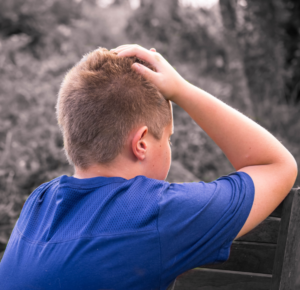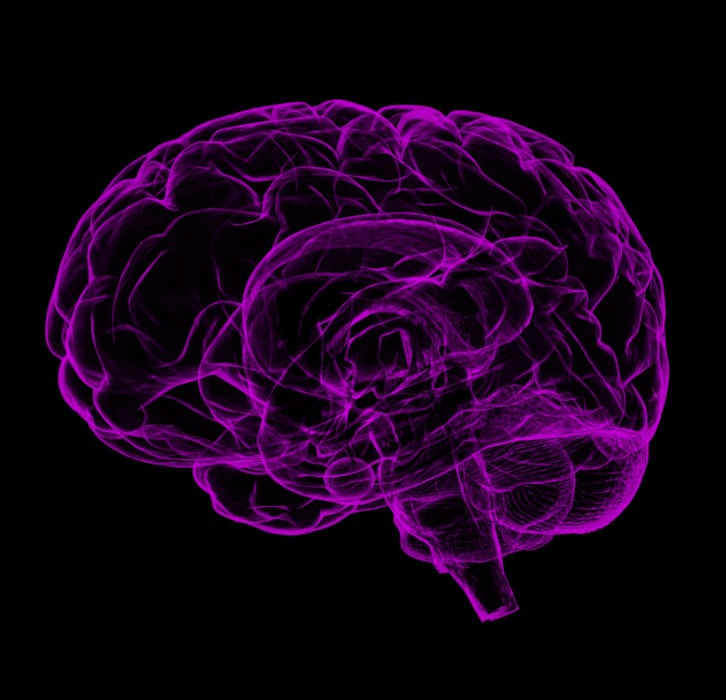As a trauma and emotion-centered psychotherapist, I am relieved that children are now being screened for toxic stress. Thinking about mental health as a byproduct of a child’s environment is an important addition to current thinking on how to improve children’s wellbeing. Rushing to diagnose a child with a potentially stigmatizing label, incorrectly blaming “defective” brain chemistry, resorting to unnecessary and sometimes toxic medications, and carrying out punishments do not address the underlying cause or help a child recover their self-confidence and ability to thrive.
Things are not always as they appear
A practitioner could diagnose an energetic young boy with ADHD or ODD, when in an alternative environment, he might be a delight. A belligerent teenager who abuses drugs and gets Ds may appear to be a “thug, undeserving of respect,” yet in another environment, transform into a well-mannered honor student. Before we burden a child with diagnoses and labels, we must determine whether something in the child’s environment has at some point created excessive stress.
Traumatic events or ACEs (adverse childhood events) like having addicted parents, going into foster care, and abuse or neglect of any kind often lead to symptoms and acting out that can mimic mental illnesses. Traumatic stress may cause anxiety, depression, and inability to focus, concentrate, or sit still. Children and teens trapped in mental anguish may look for ways to self-medicate to get relief. To relieve toxic stress, we must focus on promoting emotional safety and connection at home and in school. We must help children manage their emotions and the crisis to self-confidence that comes from feeling bad.
Ben,* age 11, came home from school one day saying he thought he was depressed. Maggie, Ben’s mother, whipped into action, calling several child psychiatrists to start treating him with antidepressants. When I met Maggie, I explained, “Ben’s symptoms have meaning. They communicate that something deep inside needs tending for which he does not yet have words. Ben is struggling to tolerate his underlying core emotions, which are natural responses to the environment. Depression is just the tip of the iceberg.” Ben was not at immediate risk, so I recommended they see a child and family psychotherapist with an attachment and trauma-informed perspective.
Does my child need medication?
Rates of anxiety and depression in children are skyrocketing in part because our society does not nurture young brains. And in our quick-fix culture we, like Maggie, treat the symptoms rather than the underlying cause. When a child like Ben reports a depressed mood, parents and doctors often respond with medication. Medication may be helpful and even needed, but scientific evidence shows other treatments often work more effectively. Medication usually treats symptoms, rarely–if ever–a root cause. Additionally, the label that comes with a diagnosis can lead a child to experience shame, even hopelessness, especially if the medication doesn’t work.
What other options are there?
Years of practicing a type of attachment and emotion-centered trauma psychotherapy known as AEDP (Accelerated Experiential Dynamic Psychotherapy) have taught me that symptoms like depression and anxiety are important communications. They indicate that something in the environment triggers or has triggered a variety of emotions like anger, sadness, fear, and shame. These can be too much for an adult, let alone a child, to bear alone. Adverse childhood events (ACEs), or large- and small-t traumas, are experiences that overwhelm a child’s capacity to process core emotions. These include neglect, abuse, foster care, adoption, parental divorce, moving, illness, or a parent with an illness or addiction, and many more.
They also include experiences where a child feels isolated by difference. For example, a child might start to realize they are gay or transgender in a community where no one is out. A child could grow up in an actively alcoholic family. A child could be of a lower socioeconomic status or different race than other students at their school. These children often feel ashamed and alone. Adopted children too may have once lived in non-nurturing, shaming environments without knowing that the environment itself was the problem. A new loving, supportive home will not by itself relieve this hurt and shame.
These children may internalize the experience by concluding that something is wrong with them. A caring adult can at least validate the experience. They might say, “No one should grow up with all that screaming and alcoholism. That must feel terrible to live though. Of course, you feel agitated and insecure.” Validation mitigates the damage to the child’s self-esteem.
It’s all about those core emotions
Ben was being bullied in school. Bullying leads to mental health problems because it triggers many powerful core emotions, also known as survival emotions. The threat of bullying caused Ben’s nervous system to go into high alert for danger. This triggered fear in his brain along with rage, sadness, and even disgust. So many emotions at one time caused his nervous system to become dysregulated. Ben experienced this as anxiety. Ben’s anxiety made it harder for him to concentrate and sit still, which in turn fueled his depression.
When we continually suppress core emotions, they put stress on the mind and body. Too many emotions, coupled with too much aloneness, in persistently triggering environments, make it difficult, if not impossible for a child to feel safe and calm. To cope with the anxiety of unprocessed emotions, a child’s mind erects automatic, unconscious, defense mechanisms. These defense mechanisms are also symptoms of toxic stress. They include depression, anxiety, aggressive behavior, substance abuse, cutting, eating disorders, and difficulty concentrating or focusing, to name but a few.
Ben’s grades fell because he was having trouble focusing and concentrating. One might jump to the conclusion that Ben was lazy or had attention problems requiring stimulants. In reality, however, poor focus and attention can also result from high anxiety or depression. Both anxiety and depression signal that underlying emotions of fear, sadness, disgust, anger, shame and/or guilt need attention. Therapy that understands, names, validates, and processes emotions will calm a taxed nervous system.
What else is going on?
Besides the current stressors like bullying and academic pressure, Maggie and I discussed other major events in Ben’s life. These included divorce, which brings up many emotions for children. Simply moving from mom’s house to dad’s house, even in a relatively amicable split, can be jarring. It can raise fears and trigger sadness from loss of the way things used to be. Similarly, children in the foster care system who move frequently will experience anxiety, even when the foster parents are themselves wonderful parents. In general, children do best in calm and consistent environments.
The right therapy can help
Ben and Maggie went to therapy together. The therapist taught Maggie about PACE and PLACE, essential components of healing. PACE refers to the therapist creating a setting that is Playful, Accepting, Curious, and Empathic. PLACE refers to the parent creating a healing environment at home by being Playful, Loving, Accepting, Curious, and Empathic.
Additionally, the therapist worked with Maggie to help her read and respond to Ben’s non-verbal communication. For example, when Ben started to twitch or get tense, Maggie learned to recognize that as anxiety and help Ben calm down by reminding him to play the “breathing game” where they would take deep belly breaths together and puff out their stomachs. Maggie also learned to listen calmly, without interrupting or offering advice. Maggie learned to validate Ben’s varying emotions underneath his anxiety. She said, for example, “I would be so angry if a kid at school insulted me. I might have to work hard not to punch them in the nose!”
Once they validated Ben’s emotions, he felt better, and they did their best to solve problems calmly. Maggie worked with the school to make Ben feel safer and to take some academic pressure off him temporarily. Maggie had sessions alone with Ben’s therapist to deal with her anger and fears. She learned to stay connected to Ben during tough moments when she would get triggered and feel herself get angry or impatient. Maggie also stayed present in the therapy sessions, comforting Ben while he processed his sadness, getting relief through crying about the divorce. Ben’s anxiety and depression lifted, and he began to thrive.
Happier endings are possible
The remedy for a child’s symptoms of distress is not necessarily medication or sending them alone to a psychotherapist. Children need to find a safe way to express their emotions, have them validated by their parent and other family members, and know their feelings are ok. A child needs to feel they belong, and that they are not bad or weird for feeling bad. They need help tolerating and calming the discomfort and pain their emotions bring up in their body as well as in their mind.
Hugs, snuggles, talking, playing, making art, and other ways of processing emotions help even the toughest of children feel safe expressing their emotions so that they can flow through the body and release. An attachment- and emotion-centered, trauma-informed approach heals the symptoms, as opposed to placing a temporary Band-Aid the way medication alone can do. This approach stands in stark contrast to punishing a child for acting out or diagnosing a child with a mental disorder.
We must not send a message that our children are broken. Children easily interpret their distress as a personal flaw. This can evoke shame and adversely affect confidence. A trauma-informed approach includes parent and child together connecting, sharing, and solving problems. It sends a relieving, brain-regulating message that a child is not alone. Parent and child together can uncover the current and past stresses in the environment, work to restore a sense of calm and safety. This will build a child’s trust that talking honestly about struggles leads to relief. Working with emotions restores confidence and mastery that “I can feel my feelings, connect with caring others, and deal with whatever life brings.” Ben and Maggie did it. So can your child and you.
*To protect confidentiality, patient names and identifying information have been changed.



